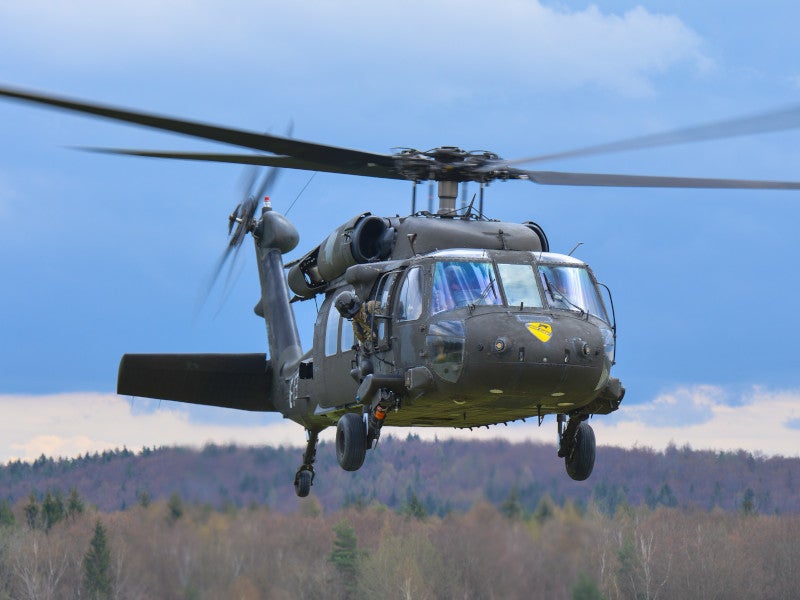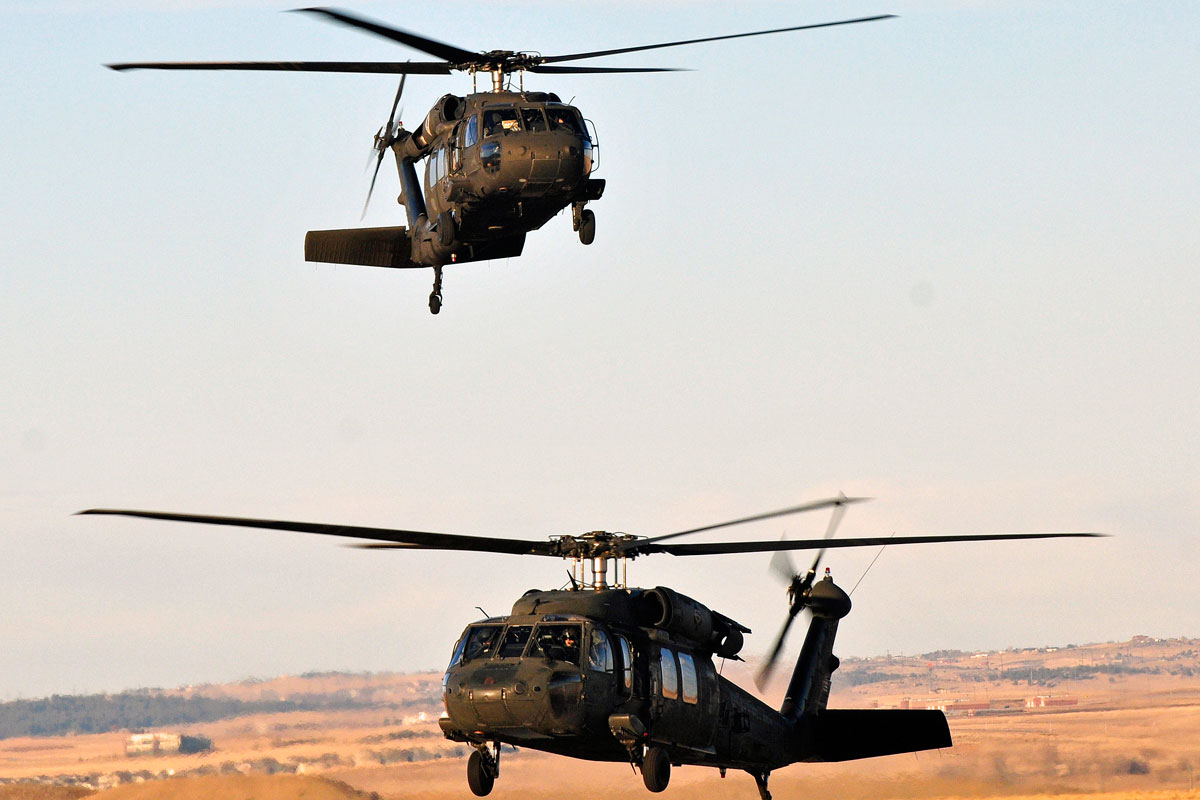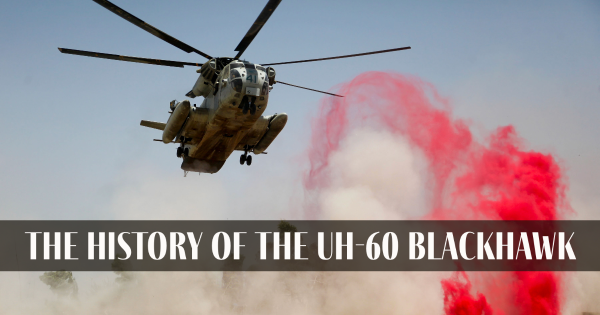Navigating Success: UH 60 Helicopter Maintenance Ideal Practices
Navigating Success: UH 60 Helicopter Maintenance Ideal Practices
Blog Article
Understanding the Mechanics and Engineering Behind Uh 60 Helicopters
The UH-60 helicopter, typically recognized as the Black Hawk, stands as a peak of modern rotorcraft technology, embodying a blend of robust engineering and detailed mechanics. As we peel back the layers of the UH-60's style, a world of detailed systems and thorough design comes to light.
Background of UH-60 Helicopters
The history of UH-60 helicopters traces back to the late 1970s when the USA Military looked for a advanced and versatile utility helicopter to change its aging fleet. In feedback to this need, the Sikorsky Aircraft Company developed the UH-60 Black Hawk helicopter. Presented in 1979, the UH-60 quickly ended up being a staple in military procedures as a result of its excellent capacities.
The UH-60 was made to stand out in a selection of objectives, including army transportation, clinical emptying, digital war, and unique procedures. Its ability to adjust to different functions made it a beneficial asset to the united state Military and other military forces around the world
Throughout the years, the UH-60 platform has actually gone through numerous upgrades and variations to enhance its efficiency and equal progressing goal needs. These helicopters have seen substantial service in conflicts such as the Gulf War, Afghanistan, and Iraq, showcasing their reliability and versatility in varied functional atmospheres. The UH-60's rich history is a testament to its enduring tradition as a leading energy helicopter.

Engine and Power Equipments
Using advanced propulsion technology, UH-60 helicopters are outfitted with innovative engine and power systems to make certain optimal efficiency and integrity in an array of operational situations. The UH-60, frequently referred to as the Black Hawk, is powered by 2 General Electric T700-GE-701D engines, each efficient in delivering up to 1,940 shaft horse power. These turboshaft engines give the needed drive for the helicopter to carry out its goals efficiently, consisting of army transportation, medical emptying, and battle support.

Rotor System and Aerodynamics
Exactly how do the rotor system and the rules of aerodynamics of UH-60 helicopters contribute to their operational performance and flight abilities? The rotor system of the UH-60 helicopter plays a crucial duty in offering lift and propulsion.
The rules of aerodynamics additionally play an essential function in the performance of UH-60 helicopters. The streamlined fuselage and blades blade layout lower drag, allowing the helicopter to achieve higher speeds and imp source better gas efficiency. The wind resistant style of the UH-60 likewise adds to its capability to run in diverse environmental problems, consisting of hot temperatures and high elevations.
Avionics and Flight Control Equipment

In its detailed sychronisation with the blades system and aerodynamics of UH-60 helicopters, the avionics and flight control systems form an important network of technologies forming the airplane's functional capabilities. In the UH-60, these systems include digital displays, interaction radios, General practitioner navigation, weather condition radar, and autopilot systems.
The trip control systems of the UH-60 are accountable for converting the pilot's inputs right into the suitable adjustments to the rotor system, guaranteeing stable flight and maneuverability. These systems consist of hydraulic actuators, servos, and computers that work with each other to control the tail and major blades, as well as various other flight control surface areas. By specifically handling the helicopter's flight dynamics, these systems allow pilots to perform a vast array of goals, from transport and search-and-rescue to battle operations, with precision and self-confidence.
Role and Applications in Aeronautics
The function and applications of avionics and trip control systems in air travel are indispensable to ensuring the effective and safe operation of airplane, including UH-60 helicopters. Avionics systems in UH-60 helicopters encompass a series of digital systems that help in navigation, communication, tracking, and managing numerous airplane features. These systems consist of digital display screens, autopilot systems, interaction radios, GPS navigating devices, and weather radar. Flight control systems play a critical duty in maneuvering the helicopter airborne, maintaining security, and ensuring precise activities. The fly-by-wire innovation made use of in modern UH-60 helicopters converts pilot inputs right into digital signals, which are after that translated by the flight control computer systems to change the aircraft's control surfaces. In addition, these systems integrate safety and security attributes such as autopilot modes, terrain understanding weblink warning systems, and stability augmentation systems to enhance the general security and functional abilities of the UH-60 helicopters in different objectives, including troop transportation, medical emptying, search and rescue, and airborne firefighting.
Conclusion
To conclude, the UH-60 helicopter is a versatile aircraft with an abundant history and advanced design. Its engine and power systems, blades system, aerodynamics, avionics, and trip control systems all collaborate to make it a reliable and trustworthy machine. The UH-60's function and applications in aeronautics are substantial, ranging from army procedures to look and save objectives. Its proceeded development and usage demonstrate its significance in the field of aeronautics (uh 60).
In its detailed coordination with the rotor system and aerodynamics of UH-60 helicopters, the avionics and trip control systems develop an important network of technologies shaping the aircraft's functional capacities.The flight control systems of the UH-60 are responsible for equating the pilot's inputs into the appropriate modifications to the rotor system, making certain stable flight and maneuverability. Avionics systems in UH-60 helicopters encompass an array of digital systems that aid in navigating, communication, monitoring, and regulating numerous aircraft functions. Furthermore, these systems integrate safety and security features such as auto-pilot settings, terrain recognition warning systems, and stability augmentation systems to enhance the total safety and operational capacities of the UH-60 helicopters in various goals, consisting of army transportation, clinical discharge, search and rescue, and aerial firefighting.
Its engine and power systems, rotor system, aerodynamics, avionics, visit and trip control systems all function together to make it a reliable and reputable machine.
Report this page